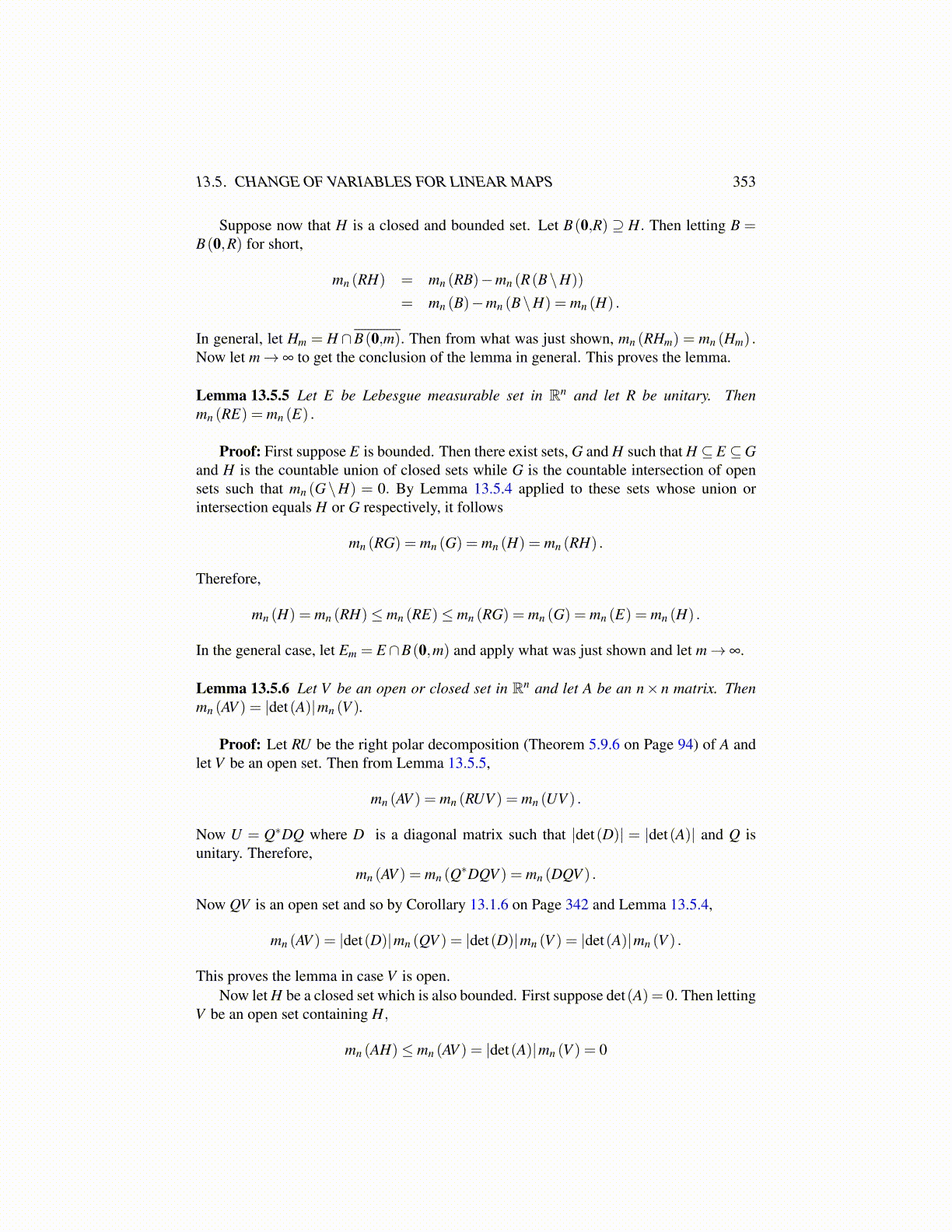
13.5. CHANGE OF VARIABLES FOR LINEAR MAPS 353
Suppose now that H is a closed and bounded set. Let B(0,R) ⊇ H. Then letting B =B(0,R) for short,
mn (RH) = mn (RB)−mn (R(B\H))
= mn (B)−mn (B\H) = mn (H) .
In general, let Hm = H ∩B(0,m). Then from what was just shown, mn (RHm) = mn (Hm) .Now let m→ ∞ to get the conclusion of the lemma in general. This proves the lemma.
Lemma 13.5.5 Let E be Lebesgue measurable set in Rn and let R be unitary. Thenmn (RE) = mn (E) .
Proof: First suppose E is bounded. Then there exist sets, G and H such that H ⊆ E ⊆Gand H is the countable union of closed sets while G is the countable intersection of opensets such that mn (G\H) = 0. By Lemma 13.5.4 applied to these sets whose union orintersection equals H or G respectively, it follows
mn (RG) = mn (G) = mn (H) = mn (RH) .
Therefore,
mn (H) = mn (RH)≤ mn (RE)≤ mn (RG) = mn (G) = mn (E) = mn (H) .
In the general case, let Em = E ∩B(0,m) and apply what was just shown and let m→ ∞.
Lemma 13.5.6 Let V be an open or closed set in Rn and let A be an n× n matrix. Thenmn (AV ) = |det(A)|mn (V ).
Proof: Let RU be the right polar decomposition (Theorem 5.9.6 on Page 94) of A andlet V be an open set. Then from Lemma 13.5.5,
mn (AV ) = mn (RUV ) = mn (UV ) .
Now U = Q∗DQ where D is a diagonal matrix such that |det(D)| = |det(A)| and Q isunitary. Therefore,
mn (AV ) = mn (Q∗DQV ) = mn (DQV ) .
Now QV is an open set and so by Corollary 13.1.6 on Page 342 and Lemma 13.5.4,
mn (AV ) = |det(D)|mn (QV ) = |det(D)|mn (V ) = |det(A)|mn (V ) .
This proves the lemma in case V is open.Now let H be a closed set which is also bounded. First suppose det(A) = 0. Then letting
V be an open set containing H,
mn (AH)≤ mn (AV ) = |det(A)|mn (V ) = 0